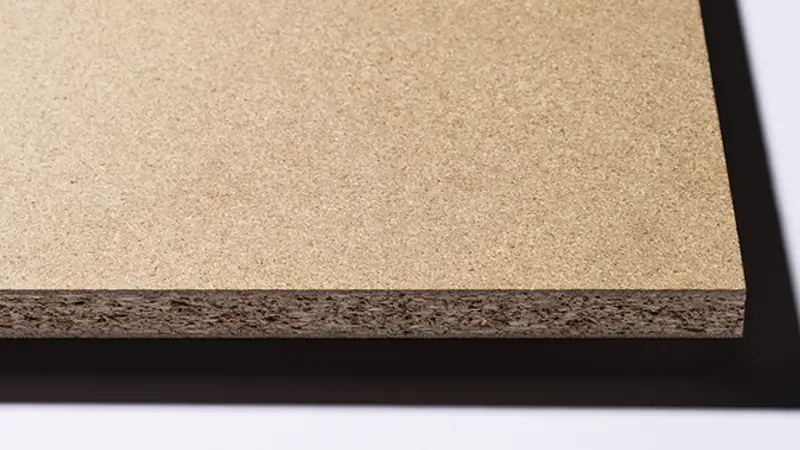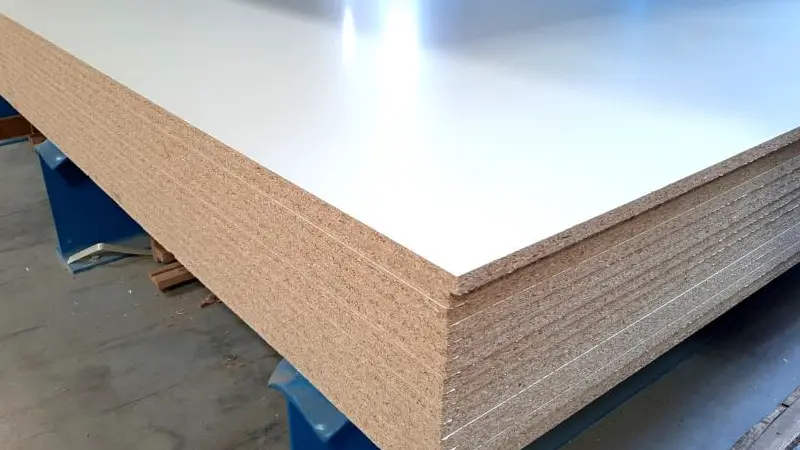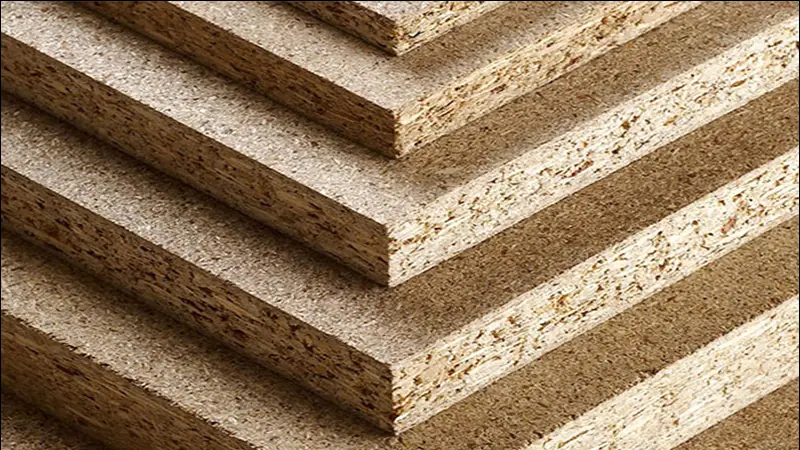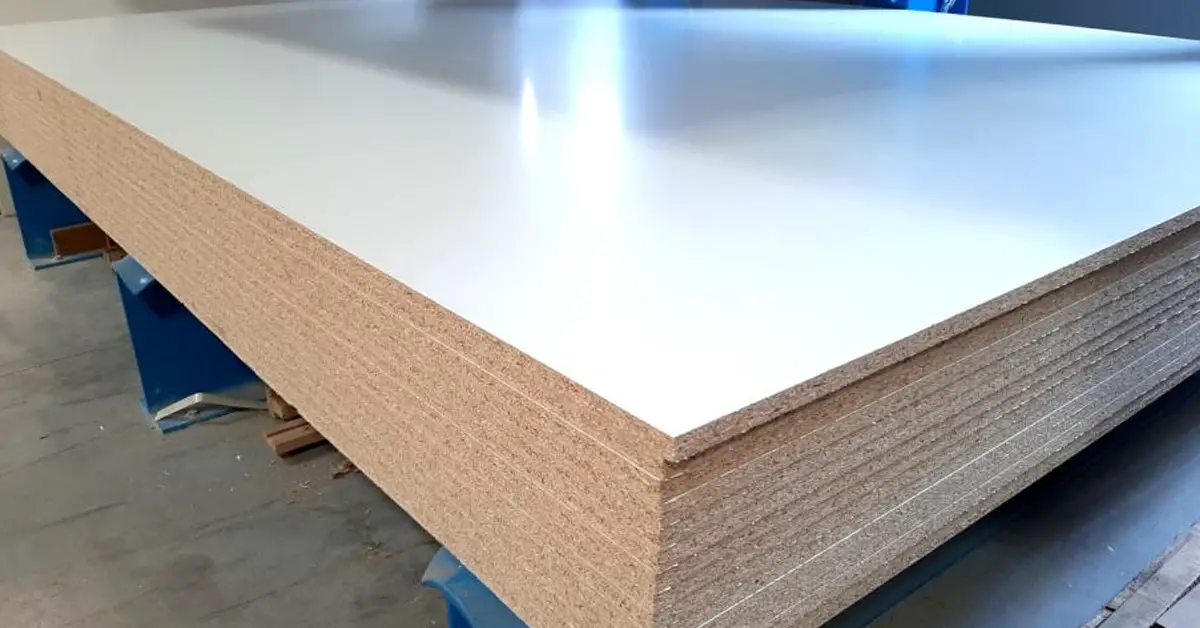At this point, it’s no secret that almost the entirety of IKEA’s offerings is made from particleboard. While you may know that this material is quite dense and sturdy, you may not know how well it stacks up against competition like wood. Exactly how strong is IKEA particle board?
Particleboard is strong enough for day-to-day furniture pieces, but it’s nowhere near as strong as regular hardwood. It’s also not as aesthetically pleasing as hardwood, making it a less enticing option overall. If you’re looking for the most budget-friendly option, however, particleboard is an option.
In this article, you’ll learn what particle board means and how strong this material is. Also, you’ll learn about the durability of the particle board that IKEA uses to make its furniture. You’ll also learn if you should consider IKEA particle board if you value durability.
Is Particleboard Stronger than Wood?

Particleboard is capable of being used for light furniture, its strength doesn’t compare to that of real wood. Particleboard can only be used for furniture pieces that won’t undergo any significant stress. Under any significant pressure, particleboard furniture will either sag or even break in half.
If you’re still not convinced about the superiority of wood, try finding a bridge made from particleboard. Particleboard may be common amongst structures that only undergo little pressure. When you need extreme strength, however, wood is undoubtedly the way to go.
Apart from strength, there are other areas in which wood is superior to particleboard. In terms of aesthetics, particleboard has a grainy look which just doesn’t cut it on a finished product. Instead, it’s covered with an opaque material to make it look exactly like wood.
The fact that particleboard is always made to look like wood shows the superiority of wood in aesthetics. While wood may be covered with a finish, it’s rarely ever finished. The natural look of wood is excellent as is, with no need to cover it with any artificial colors to make it look better.
What’s the Difference Between Wood and Particleboard?
While the previous sections did a fair job of evaluating the fundamental differences between wood and particleboard, the explanations are still pretty shallow. In this section, you’ll learn some of the major differences between wooden furniture and regular IKEA particleboard furniture.
In this context, wood refers to all kinds of wood derived from a tree, including plywood. Also, particleboard doesn’t differentiate between the two different types to keep things less confusing.
Here are some of the main differences between wood and particleboard to know before buying any piece of furniture from IKEA.
- Strength and durability.
The fact that most variants of wood are stronger than any type of particleboard cannot be overemphasized. Wood is the natural parent of most wood-derivatives like particleboard, and all efforts to create a stronger and cheaper alternative have yielded almost no results.
If you’re going for the most durable material of the two, you should be going for a piece of wooden furniture. If you don’t care much about the strength and durability, particleboard is a pretty fine option.
- Price.

Frankly, price is the biggest factor that decides what furniture material most people purchase. Even with particleboards being weaker and less durable than wood, people still buy IKEA products, which are almost entirely based on particleboards.
It’s easy to guess the cheaper option of the two. Nobody will buy particleboards if they cost a penny higher than wooden furniture, as they’re almost worse in any other aspect. Predictably, particleboard is a lot cheaper than most wood variants, making it the default option if you’re shopping on a budget.
This explains why IKEA is one of the biggest furniture retailers in the United States. Since it uses cheap particleboard for most of its products, it can lower prices significantly, offering lesser quality furniture at a much lesser price.
- Waterproof abilities.
The imperviousness of a piece of furniture to water is one of the qualities that influences your purchase decision. Technically, none of these two materials are waterproof by nature, but some post-processing adds some water resistance to both of them.
The average wood furniture is less water-resistant than the average particleboard furniture for an important and unrelated reason.
If you read down here, you probably know already that wood naturally looks better than particleboard due to the grainy look of the particleboard’s surface. However, you should also know that manufacturers don’t leave particleboards looking ugly.
To make the material look somewhat presentable, IKEA usually finishes it with acrylic lacquer. One of the properties of acrylic lacquer is water resistance. Putting everything together, you should start to understand why particleboard-based furniture is mostly water-resistant.
With wood, however, that’s not always the case. Wooden furniture already looks great, and there’s no reason why you may want to finish them with any material. Since wood also isn’t waterproof by default, it will not be resilient to water penetration.
Does IKEA Particleboard Last?

The bulk of this article has focused on explaining the technical differences between particleboard and hardwood. However, the layman won’t be interested in reading all the nerdy differences between these two materials. If you’re not a nerd, the only question you’ll have right now is: does particleboard last?
There’s a short answer and a long answer. For the short answer, IKEA particleboard does last as long as you’re using it for what it’s intended for. Most furniture pieces that use particleboard aren’t designed for excessive force, which is not a particular strength of this material.
When you look at the warranty terms in most IKEA products, you’ll notice that they have ridiculously long warranty dates. The only reason why IKEA can guaranty a 10-year warranty is due to its confidence in the durability of particleboards.
While particleboard is strong enough to survive day-to-day use, it’s not as durable as wood. For structures that are typically made from wood, it will be a lot better to simply stick to wood.
If particleboards were high-quality, we should be seeing particleboard bridges, judging by how ridiculously cheap they come. Until researchers can create something to rival the durability of wood, while offering the competitive price of particleboard, we’ll stick to the options available.

